Ever heard of a six-inch mummy that sparked wild theories of aliens and unknown species? Let’s dive into the story.
Here’s a glimpse of the mystery—but the real story unfolds as you read on.
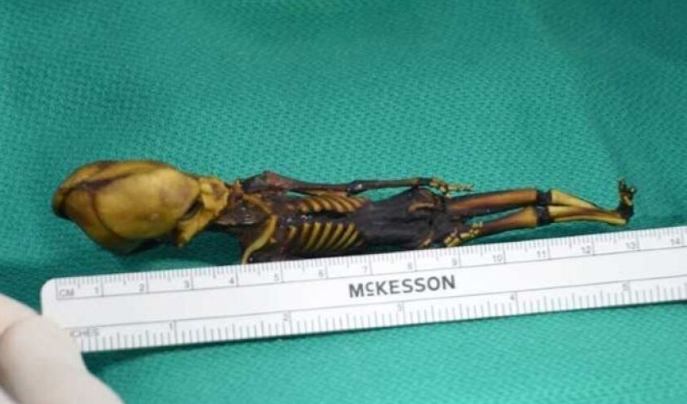
Back in 2003, in a deserted mining town in Chile’s Atacama Desert, a tiny mummified skeleton measuring just six inches was discovered. Nicknamed “Ata,” the remains baffled scientists and enthusiasts alike.
Was it a mummified fetus? A monkey? A child with dwarfism? Or, as some passionately argued—proof of extraterrestrial life?
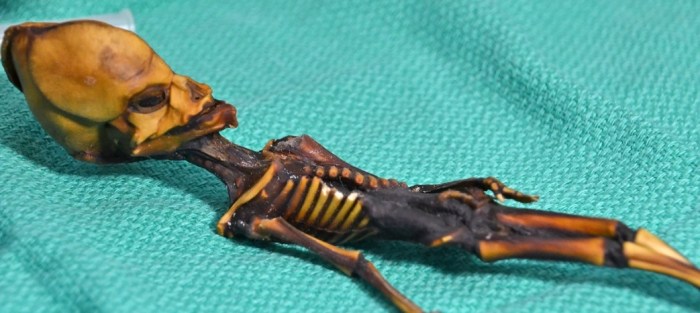
The specimen displayed striking abnormalities: it had only 10 pairs of ribs instead of the usual 12, a cone-shaped skull consistent with a condition known as turricephaly, and prematurely fused growth plates—something typically seen in older children, not in a body the size of a 20-week human fetus.
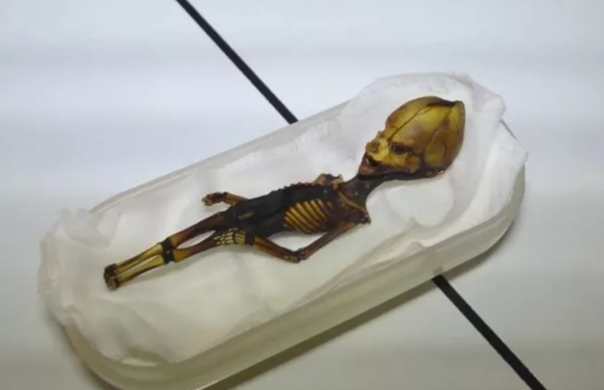
Speculations ran wild. Some believed it could be a genetically mutated human fetus, a preterm baby with birth defects, or even a child affected by a previously unknown form of dwarfism.
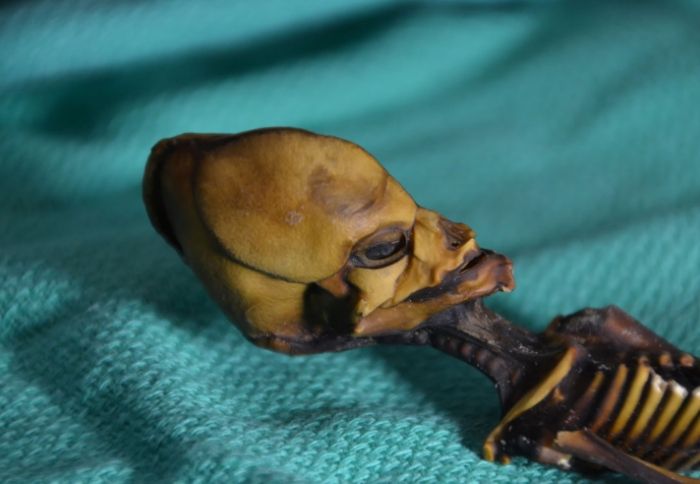
The so-called “Atacama Humanoid” gained further attention when it became the subject of a 2013 UFO documentary titled Sirius, which suggested it might be an alien being with unclassifiable DNA.
But that was just the beginning—what researchers uncovered next will shift the entire narrative.

In 2013, an initial analysis confirmed the skeleton was of human origin—a female—and likely only decades old, not ancient.
Now, a new study published in Genome Research and led by Garry P. Nolan of Stanford University has taken the investigation even further.
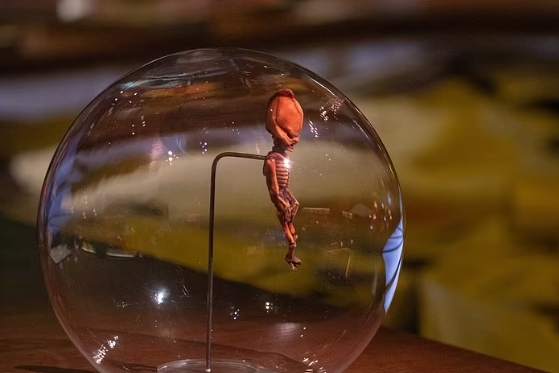
By conducting a full genomic analysis, researchers identified multiple rare mutations in genes associated with bone formation.
According to Dr. Atul Butte, a co-author of the study, these mutations were both unique and extremely rare—previously unseen in any recorded human DNA sequences.

“A lot of these genes are known to be associated with bone development and growth,” Dr. Butte explained. “We searched through tens of thousands of genetic records and found no one else with the same mutations.”
The analysis also revealed, through mitochondrial DNA, that the individual had Chilean ancestry. Despite the skeleton showing a bone age equivalent to a 4- to 6-year-old child, researchers believe the infant likely did not survive long after birth—if at all.

“We think this baby was either still in the womb, miscarried, or born prematurely,” Dr. Butte shared. “The combination of genetic defects likely led to both the skeletal abnormalities and the tragic outcome.”
And just when you thought the story was over—there’s a meaningful takeaway.

While the mystery of the “tiny alien” has been laid to rest, the findings open new doors for understanding skeletal dysplasia and genetic bone disorders. As Dr.
Butte reflected, “It’s a sad story—a human girl who faced a tragedy.” Yet, the research may contribute to better diagnosis and treatment for children with similar growth conditions.

So, if you still believe in aliens, that’s okay—just don’t use this little skeleton as your evidence.
Comments